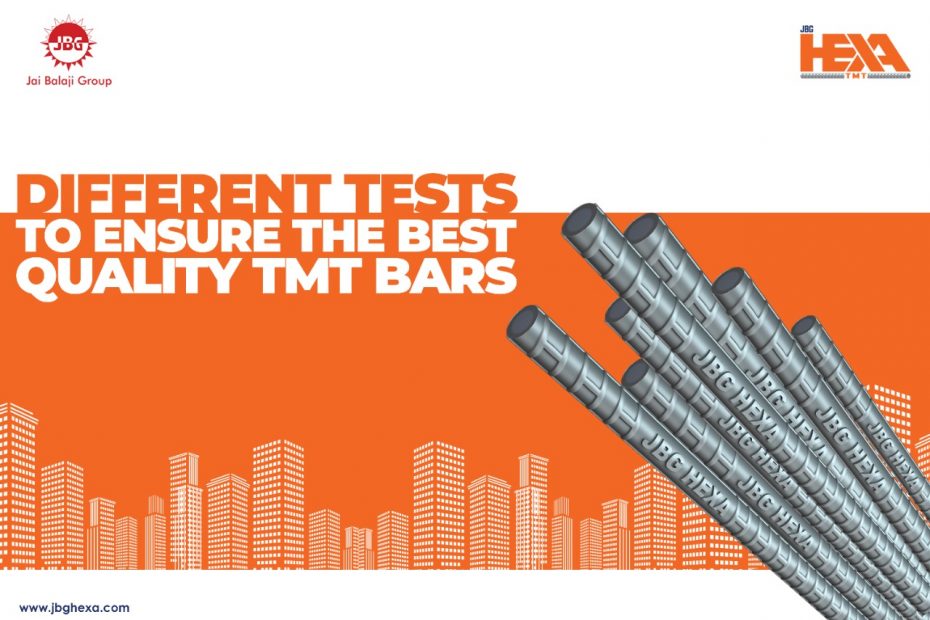VARIOUS TESTS TO ENSURE THE BEST QUALITY TMT BARS
Different projects may need different types of the best quality TMT bars, depending on the needed strength, dimensions, and features they can provide. To buy the right grade of best quality TMT bars in West Bengal, lets the managers have leverage over standardization, strength, and durability in the project. The Bureau of Indian Standards grades best quality TMT bars as per their chemical and mechanical properties.
- Testing of Physical Properties– The first test to prove the best quality TMT bars is the testing of physical properties. The universal testing machine is used for mechanical tests such as yield strength, ultimate tensile strength, and percentage elongation.
- Yield Strength
The yield strength of a best quality TMT bar is the most amount of stress that can be put along its axis before it starts to change its shape. A metal that has high yield strength can handle high stress without any full-time changes showing on it.
- Ultimate Tensile Strength
Another test to prove the best quality of TMT bars is Ultimate Tensile Strength (UTS), also known as tensile strength, in short, is the most amount of stress that a material can take while being stretched or pulled before breaking. The ultimate tensile strength is usually found by taking a tensile test and recording the engineering stress against the strain.
- Percentage Elongation
Another test to prove best quality TMT bars is Percentage Elongation is a measurement that shows the amount a material will plastically and elastically change up to a breaking point. Percentage elongation is one way to measure and properly show the ductility of a material.
- Testing of Mean Projected Rib Area– The third test in proving the best quality TMT Bars involves one of the most left alone parts of structural engineering i.e., Mean Projected Rib Area. To determine the MPRA we have to find out the Depth of transverse Ribs (DTR), Length of transverse ribs (LTR), Spacing of transverse ribs (STR), and Angle of Inclination.
- Bend & Rebend Tests– Bend and Rebend Tests are mainly done to evaluate the ductility of the best quality TMT bar. The bend is performed by bending the steel bar at the midpoint resulting in bending without fracture. The Rebend test is performed to measure the effect of strain aging on steel.
- Chemical Analysis Test– The best quality TMT bars are tested for chemical properties in steel using a spectrometer. The spectrometer mainly gives the results within a few seconds. It gives results of the percentages of carbon, sulfur, and phosphorus which are very important as per the BIS. But in the case of micro-alloyed grade TMT, percentages of chromium, copper, manganese, etc., are also given by the spectrometer.
- Testing of Macrostructure– The last test to prove the best quality TMT bars is the most important i.e., Macrostructure. A solution is prepared and the bars have been sampled, the sample is taken out from the beaker so we can see the Macrostructure with the naked eye i.e., stable and concentrated hardened Martensitic periphery on the outer surface and soft fine-grained ferrite pearlite on the inside.
Thus we can conclude by saying that best quality TMT bars have desired tensile strengths coupled with high elongation as required in seismic zones. JBG HEXA sources the best quality raw material and manufactures the finest grades TMT Bars. We undertake these tests for TMT Bars to ensure the quality and strength of the steel we provide.
